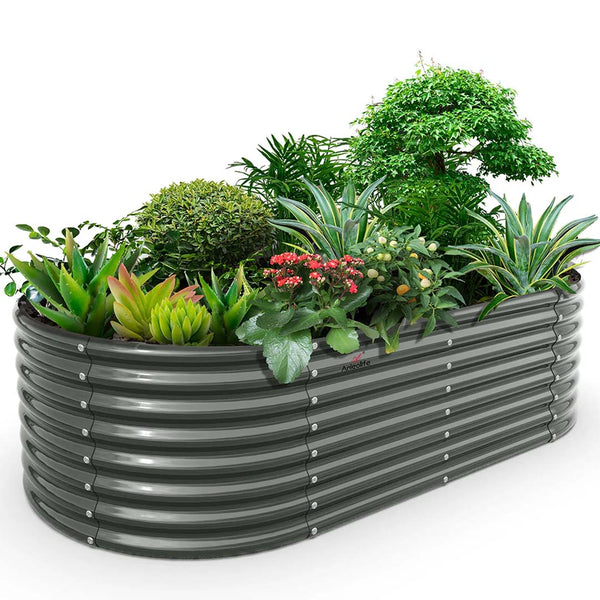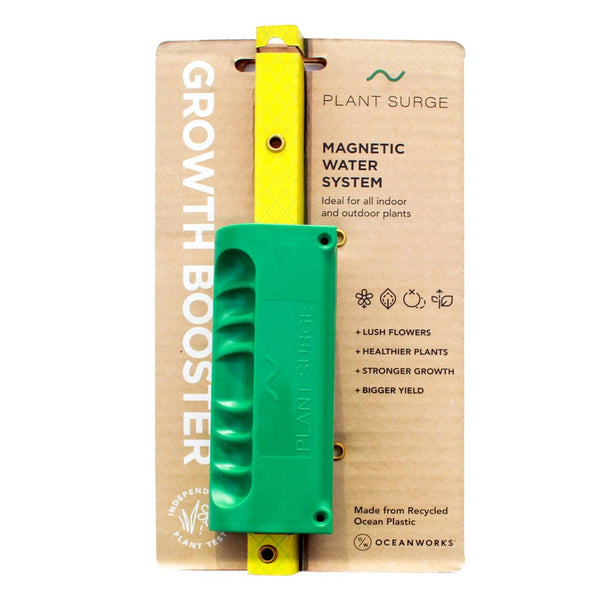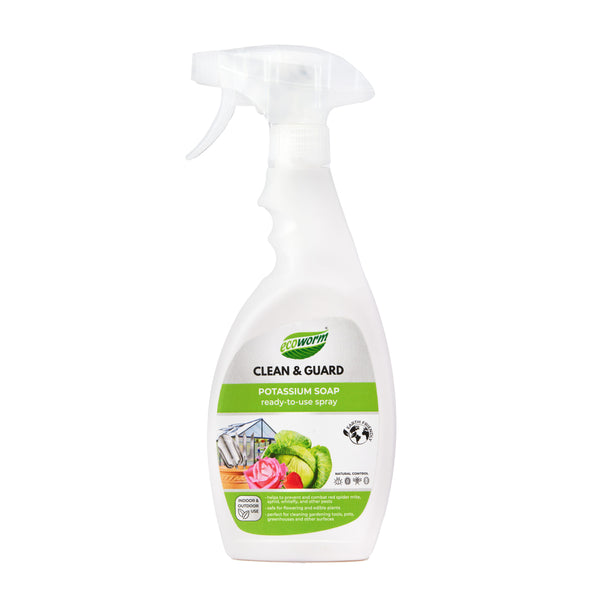The Snap-Together Raised Garden Bed Kit That Makes Growing Food Almost Too Easy

Understanding Raised Garden Beds
Benefits of Raised Beds
Raised garden beds are like the VIP section of gardening. They give your plants a little extra love by soaking up the sun's warmth, which means you can keep your green thumb busy for longer. Imagine squeezing in a few extra weeks or even months of gardening fun! These beds are a lifesaver when the weather's playing hard to get, keeping your plants safe from pests and those unexpected weather tantrums. Plus, when winter rolls around, they act like a cozy blanket for the roots of your more sensitive plants, keeping them snug and happy.
If you're lucky enough to have a big greenhouse, raised beds can be your best friend. They help you dodge weather woes and create a perfect little world for your plants. Just remember, good drainage, ventilation, and easy access to water are your best buddies in this setup.
Raised beds are like the cool kids of gardening, sitting pretty above ground level. Here's why they're awesome:
- You get to be the boss of soil health.
- They encourage roots to spread out and grow strong.
- Spotting pest problems becomes a breeze.
- No more back-breaking bending over while tending to your plants.
Types of Raised Bed Structures
Choosing the right raised bed structure is like picking the perfect outfit for your garden. Each type has its own perks, so let's break it down:
- Wooden Raised Beds: These are the classic choice, with a natural vibe that's easy to build. But keep an eye out for rot and be ready for some upkeep.
- Metal Raised Beds: Tough as nails, these beds are made from stuff like galvanized steel. They're built to last but can turn your soil into a sauna in hot weather.
- Composite Raised Beds: A mix of wood fibers and recycled plastic, these beds look like wood but are tougher and resist rot.
- Fabric Raised Beds: Light and easy to move, these are perfect for renters or folks with limited space. They offer great aeration and drainage, which is a win for root health.
| Type of Raised Bed | Durability | Maintenance | Ideal For |
|---|---|---|---|
| Wooden | Moderate | High | Natural look, DIY enthusiasts |
| Metal | High | Low | Long-lasting, modern look |
| Composite | High | Low | Durable, eco-friendly |
| Fabric | Moderate | Low | Portable, small spaces |
For more scoop on different types of raised beds, check out our articles on raised garden bed and metal raised garden beds.
By getting the lowdown on the perks and types of raised bed structures, you can pick the perfect match for your gardening style. Whether you're growing your own food in the backyard, sprucing up an urban space, or going all-in on organic gardening, there's a raised bed that's just right for you.
Choosing the Right Materials
Picking the right stuff for your raised garden bed is like choosing the perfect pair of shoes—it's gotta last and do the job right. Let's check out the options, focusing on wood, metal, and composite materials.
Wood Options for Raised Beds
Wood's a favorite for raised garden beds 'cause it looks good and you can do a lot with it. But not all wood is the same. Here's the lowdown:
Cedar and Redwood
Cedar's like the MVP for building raised beds. It's naturally tough against rot and bugs, so it sticks around for a while. Redwood's another solid pick with similar perks. But heads up, both cedar and redwood have gotten pricier lately (Gardenary).
| Wood Type | Durability | Cost | Availability |
|---|---|---|---|
| Cedar | High | High | Moderate |
| Redwood | High | High | Moderate |
Pine
Pine's the budget-friendly option compared to cedar and redwood. It's easier on the wallet, but it won't last as long in the garden. Keep the wood's lifespan in mind when you're setting up your raised beds.
| Wood Type | Durability | Cost | Availability |
|---|---|---|---|
| Pine | Low | Low | High |
Thickness and Treatment
For the best wood, go for the thickest boards you can swing, aiming for 2-inch thick ones. Thinner boards might save you some cash but they'll warp and wear out faster (Gardenary). Steer clear of pressure-treated wood to keep chemicals out of your soil. Untreated wood with eco-friendly treatments can make your raised bed last longer.
Metal and Composite Materials
Metal and composite materials are also in the mix for raised garden beds, each with its own pros and cons.
Metal
Metal beds, like those from galvanized steel, are known for being tough and rot-resistant. But they can get hot fast, which might mess with soil temperature and plant health. This is something to think about if you garden in a hot area (metal raised garden beds).
| Material | Durability | Heat Retention | Cost |
|---|---|---|---|
| Galvanized Steel | High | High | Moderate |
Composite Materials
Composite materials, made from a mix of wood fibers and recycled plastic, look like wood but last like plastic. They're tough against rot, bugs, and weather, so they're low-maintenance. Plus, they're eco-friendly since they often use recycled stuff (raised garden kits).
| Material | Durability | Maintenance | Cost |
|---|---|---|---|
| Composite | High | Low | High |
When picking materials for your raised garden bed, think about how long they'll last, the cost, and how much work they'll need. Whether you go with wood, metal, or composite, each has its own perks and things to think about. For more tips on building and placing raised beds, check out our article on building and siting raised beds.

Building and Siting Raised Beds
Alright, folks, let's chat about setting up those raised garden beds. It's not just about plopping some wood and dirt together; there's a bit of art and science to it. We're gonna break down the best height and width for your beds and throw in some tips on where to put 'em and how to design 'em.
Ideal Height and Width
Getting the height and width right is like finding the perfect pair of jeans—comfort and function all rolled into one. Here's the lowdown:
Height
- Minimum Height: Start with at least six inches. This is your basic setup, good enough for plants that don't need to dig deep (Gardenary).
- Ideal Height: Shoot for 12-18 inches. This sweet spot gives roots room to stretch, helps with drainage, and makes it easier on your back when you're out there pulling weeds (Joe Gardener).
- Maximum Height: You can go up to 24 inches if you want, but be careful—too high and you might have a soil avalanche on your hands. Plus, it looks pretty snazzy.
| Height (inches) | Benefits |
|---|---|
| 6 | Good for shallow-rooted plants |
| 12-18 | Great for root growth, drainage, and easy access |
| 24 | Handy for gardening ease and looks |
Width
- Minimum Width: Start with 18 inches. This gives your plants room to breathe and grow.
- Ideal Width: Four feet is the magic number. You can reach the middle without doing a balancing act on the edge (Joe Gardener).
- Maximum Width: Stick to four feet unless you can walk around the whole thing. Otherwise, you'll be doing some awkward stretches (Gardenary).
| Width (feet) | Benefits |
|---|---|
| 1.5 | Basic space for growth |
| 2 | Good for tight spots |
| 4 | Perfect for access and keeping soil fluffy |
Location and Design Considerations
Picking the right spot and design for your raised bed is like choosing the best seat at a concert—it's all about the view and the vibe. Here's what to think about:
Location
- Sunlight: Make sure your bed gets at least six to eight hours of sun. Your veggies will thank you with a bountiful harvest.
- Accessibility: Keep it close to a water source and your house. You don't want to trek across the yard every time you need to water or pick some herbs.
- Drainage: Avoid soggy spots. You want your plants to drink, not drown.
Design
- Orientation: Line it up north to south. This way, your plants get an even tan.
- Pathways: Leave room to walk between beds. You don't want to trample your hard work.
- Materials: Go for sturdy, non-toxic stuff like wood or metal. Check out our wood options for raised beds for more ideas.
By nailing the height, width, location, and design, you'll have a garden that's not just functional but also a joy to work in. For more handy tips on gardening in raised beds, take a peek at our other articles. Happy planting!
Planting and Maintenance Tips
Soil Preparation and Planting
Getting your raised garden bed ready is like setting the stage for a blockbuster plant performance. You get to be the director of soil quality, which is a big deal for your plant babies. Here's how to roll out the green carpet:
- Clear the Clutter: Yank out those pesky weeds, rocks, and any other junk that's squatting in your garden bed.
- Fluff It Up: Grab a garden fork or tiller and give the soil a good fluffing to about a foot deep. This helps roots stretch out and keeps water from pooling.
- Feed the Dirt: Mix in some compost, aged manure, or other organic goodies. This gives your soil a nutrient boost and makes it nice and crumbly.
- Check the Soil's Vibe: Do a quick soil test to see where it's at with pH and nutrients. If it's off, tweak it with lime to raise the pH or sulfur to lower it.
When it's time to plant, keep these tips in mind:
- Give 'Em Space: Don't crowd your plants. They need room to breathe and grow.
- Planting Depth: Pop seeds or seedlings in at the right depth. A good rule of thumb is two to three times the seed's size.
- Buddy System: Try companion planting. Pairing marigolds with veggies can keep pests at bay and make the most of your space.
Watering and Fertilizing Practices
Keeping your raised garden bed happy means getting the watering and feeding just right. Here's how to keep your plants singing:
Watering
- Stay Moist: Keep the soil damp but not soggy. Raised beds dry out quicker than ground gardens, so keep an eye on them.
- Smart Watering: Use drip irrigation or soaker hoses to water the soil directly. This cuts down on evaporation and keeps leaves dry, which is good for plant health. Water in the morning so plants can dry off before nightfall.
- Mulch Magic: Spread some mulch around your plants. It helps lock in moisture, keeps weeds down, and evens out soil temperature.
Fertilizing
- Go Organic: Use organic fertilizers like compost, fish emulsion, or seaweed extract. They feed your plants slowly and keep the soil healthy.
- Regular Feeding: Give your garden a nutrient boost every 4-6 weeks during the growing season. Follow the instructions on the fertilizer package.
- Soil Boosters: Add compost or aged manure now and then to keep the soil rich and fertile.
| Fertilizer Type | Nutrient Content | Application Frequency |
|---|---|---|
| Compost | Balanced nutrients | Every 4-6 weeks |
| Fish Emulsion | High in nitrogen | Every 3-4 weeks |
| Seaweed Extract | Rich in trace minerals | Every 4-6 weeks |
For more tips on keeping your raised garden bed in top shape, check out our articles on gardening in raised beds and raised garden kits. Stick to these tips, and you'll have a garden that's the envy of the neighborhood, season after season.
























